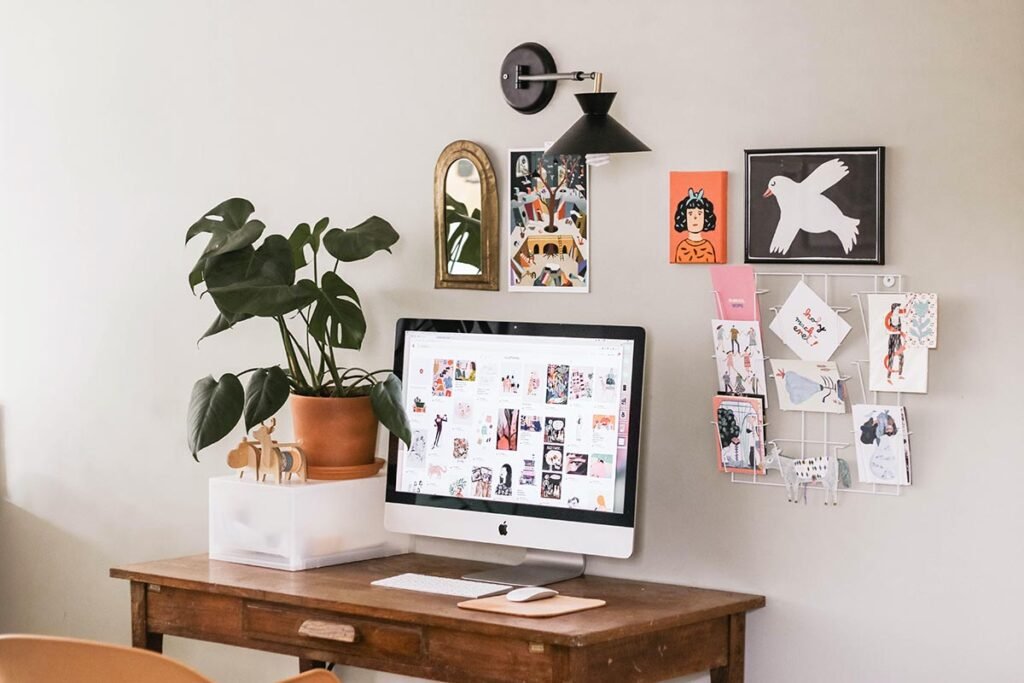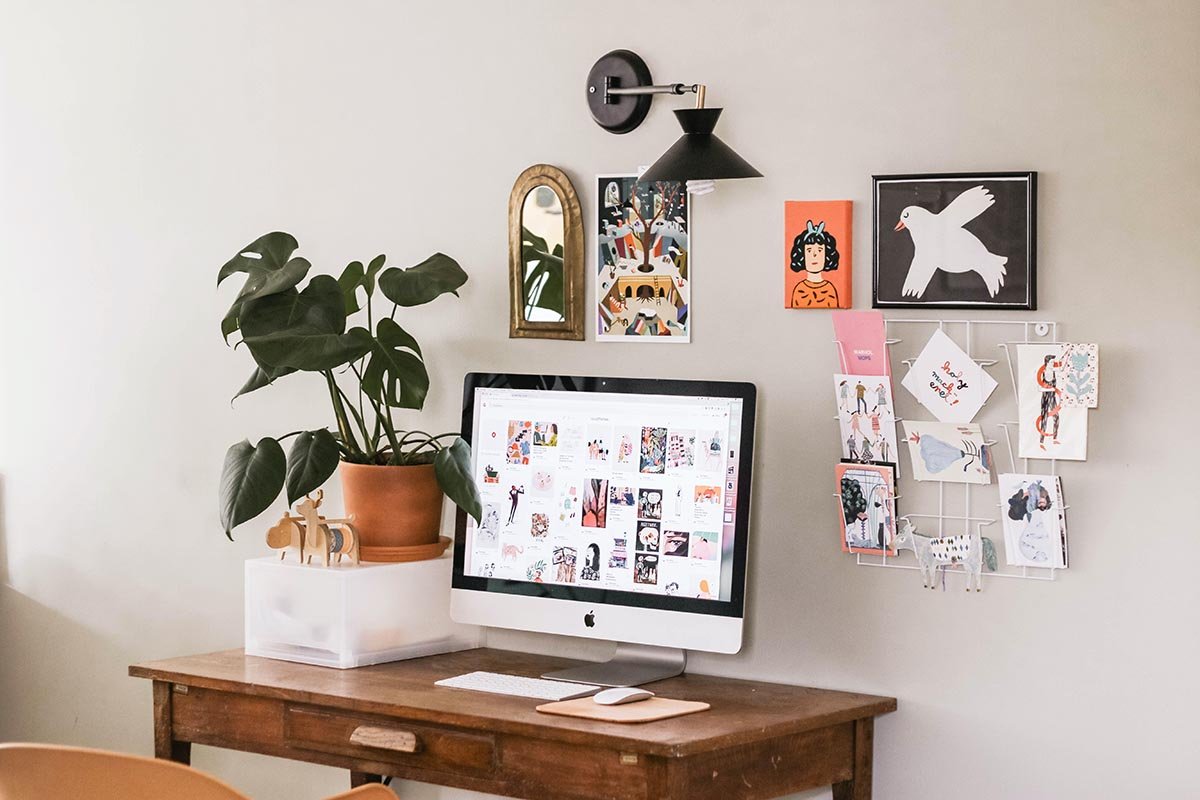Stop Working From The Couch – How to Organize a Professional Home Office
Organizing a home office can be challenging, especially starting from scratch. Regardless of how much space you have to work with, every home office needs a few essential elements. A comfortable chair and desk are imperative, but you’ll also need plenty of storage for files, books, and other office supplies.
If you’re lucky enough to have a dedicated room for your home office, take advantage of the natural light by placing your desk near a window. And if you don’t have a lot of space to spare, consider using a corner of your living room or bedroom.
With a bit of creativity and some careful planning, you can create a functional and stylish space. Here are a few tips to help you get started!

Define Your Needs
Before you start buying furniture or rearranging your existing setup, take a moment to think about what you need from your home office. Do you need a place to pay bills and check email, or do you need a dedicated workspace for projects that require focus and concentration?
The answer to this question will help determine the layout of your home office. For example, if you only need a small desk and chair, you’ll have more flexibility regarding where you can place your furniture. But if you need a more oversized desk and storage for files, you’ll need to find a room with enough space to accommodate those items.
Choose a Quiet Location
Once you’ve identified a few potential locations for your home office, it’s time to narrow down your choices. When selecting a room, pay attention to noise level, natural light, and privacy. A quiet location will help you stay focused and avoid distractions, so try to find a room away from the busiest areas of your home.
If you live in a small apartment or condo, you may need to get creative. For example, you might use a corner of your bedroom or living room or set up a desk in your kitchen.
Create a Floor Plan
Once you’ve selected a location for your home office, it’s time to start planning the layout. Begin by measuring the room and creating a floor plan. Then, use graph paper or an online tool to experiment with different furniture arrangements.
When planning your office layout, be sure to allow enough space to move around comfortably. You should also leave extra space for storage items like files and books.
Start with the Basics
Once you’ve finalized your floor plan, you can start furnishing your home office. If you’re starting from scratch, you’ll need to purchase a desk, chair, and storage solutions. But if you already have some furniture, you can focus on filling in the gaps.
When selecting furniture for your home office, be sure to choose stylish and functional pieces. For example, an L-shaped desk will give you plenty of workspaces, while a filing cabinet will provide much-needed storage for files and documents.
In terms of décor, it’s essential to find a balance between personal style and professional appearance. Clients or customers may visit your office if you work from home, so it’s important to create a space that makes a good impression.
At the same time, your home office should be a place where you feel comfortable and productive. So don’t be afraid to add a few personal touches, like photos or artwork.
Add Storage Solutions
One of the most important aspects of any home office is storage. After all, you’ll need a place to keep files, documents, and office supplies.
There are a variety of storage solutions available, so take some time to explore your options. For example, you might use a filing cabinet to store important documents or install shelves to hold books and other items.
If you have many small items, like pens and paperclips, you might want to invest in a desk organizer. This will help keep your workspace tidy and make it easier to find what you need.
Install Technology
In today’s digital world, it’s important to have a reliable computer and high-speed internet connection in your home office. If you don’t already have these things, now is the time to invest in them.
In addition to a computer and internet connection, you might need a few other pieces of technology for your home office. For example, you might want to purchase a printer, scanner, or fax machine.
You should also consider the type of phone system you need. If you work from home, you might invest in a VoIP (Voice over Internet Protocol) phone system. This will allow you to make and receive calls using your internet connection.
Create a Working Schedule
One of the most important things you can do to improve your productivity is to create a schedule. When you have a set work schedule, it’s easier to stay focused and avoid distractions. While your work schedule will vary depending on your individual needs, in general, it’s a good idea to set regular hours and take breaks throughout the day.
You should also try to create a daily routine that includes exercise, meals, and personal errands. By taking care of your physical and mental health, you’ll be better able to focus on work.
Set Some Ground Rules
If you live with family or roommates, it’s important to set some ground rules for your home office. For example, you might agree not to be disturbed during certain day hours.
You should also ensure that everyone understands that your office is a workplace, not a playroom. This will help you avoid distractions and stay focused on your work.
Of course, it’s also important to have some flexibility in your rules. For example, you might take a break for a quick chat with your spouse or child.
By following these tips, you can create a stylish and functional home office. And by implementing some basic organization techniques, you can keep your office tidy and efficient.


